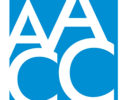Accounting for everyone
By AACC 21st Century Center Staff
July 18, 2017
The Voluntary Framework of Accountability is helping colleges track more students, giving them a clearer picture of outcomes.
In business, accountability is key. Companies are accountable to their boards, shareholders, and customers. They’re accountable to their mission. It’s no different in higher education, and for public institutions, accountability extends to their funders, including state and federal governments.
Since their beginning more than a century ago, community colleges were known for being open-access institutions. Anyone with a desire to continue their education could attend for a low cost. But over the last decade, the focus has shifted from access to success. Community colleges are being held to higher accountability standards for the number of graduates they produce.
Federal measures often fall short of accurately measuring this information. The Integrated Postsecondary Education Data System (IPEDS) doesn’t take into account that more than 60 percent of community college students attend part time, meaning it typically takes longer to complete a degree or certificate program. It doesn’t take into account students who transferred in, such as those who are upgrading their skills after time in the workforce or those who found they were not prepared for college. And it doesn’t take into account that many students at community colleges are working toward certificates, rather than degrees. IPEDS measures only full-time, first-time degree-seeking students. It only gives these students three years to reach an outcome – 150 percent of the time to complete a two-year degree – which is far too short for the typical community college student.
The American Association of Community Colleges’ Voluntary Framework of Accountability (VFA) was developed by community colleges, for community colleges. The data captured truly encompass the full breadth of the community college mission and the diversity of students’ educational goals and experiences. The data tell a story.
A clearer picture
Look at Delaware Technical Community College (DTCC). The college is in its second year of using VFA.
Data was entered retrospectively to measure students entering the college in fall 2009 – a cohort of 3,501 students.
Three years after first enrolling, according to IPEDS, only 10.8 percent of the full-time, first-time college students in that cohort earned degrees. Nearly 25 percent were still enrolled, and 12.5 percent left with no award, possibly transferring to another institution. That’s where IPEDS stops. So what happened to those students still enrolled? And what about the part-time students?
VFA was used to capture student progress for six years, which presents a clearer picture. By 2015, nearly 22 percent of the students in the 2009 cohort had earned an award of some sort – an associate or bachelor’s degree, or a certificate. Of those seeking a credential, 32.4 percent completed their program. Eight percent were still enrolled. These numbers include both full-time and part-time students, as well as students who may have previously attended another college or university.
Using data to advance the mission
DTCC began using VFA because “our Institutional Research team is small and struggling to keep up with increasing external data reporting requirements,” said Judi Sciple, vice president for institutional effectiveness and development at DTCC. There’s also been “increased demand for data at the college to make meaningful decisions.”
Part of that comes from accrediting agencies. The Middle States Commission on Higher Education (MSCHE) now requires institutions to “define meaningful goals with defensible standards for evaluating whether students are achieving those goals.”
“VFA gives us a solid foundation for defending the institutional measures and benchmarks that are in place for evaluating our performance, whereas in the early years of assessment, many of our benchmarks were created internally,” Sciple explained.
Another accreditation change recently implemented by MSCHE requires institutions to report on specific national and institutional metrics on an annual basis. These metrics will be used to determine satisfactory performance and ongoing accreditation.
“The most significant benefit at this early stage of implementation has been the benchmarks we are able to extract from VFA data,” Sciple said.
The college just completed a nine-month process where they aligned several mission goal assessment measures with VFA metrics, and “use of that data at the institutional level has already helped us think in different ways about what ‘effectiveness’ and ‘success’ means and develop related improvement actions,” Sciple said.
As the college begins to enter data into the career and technical education (CTE) section of the VFA database, two more mission goal assessment measures will be aligned next year.
Are you using VFA? Sound off on LinkedIn.



